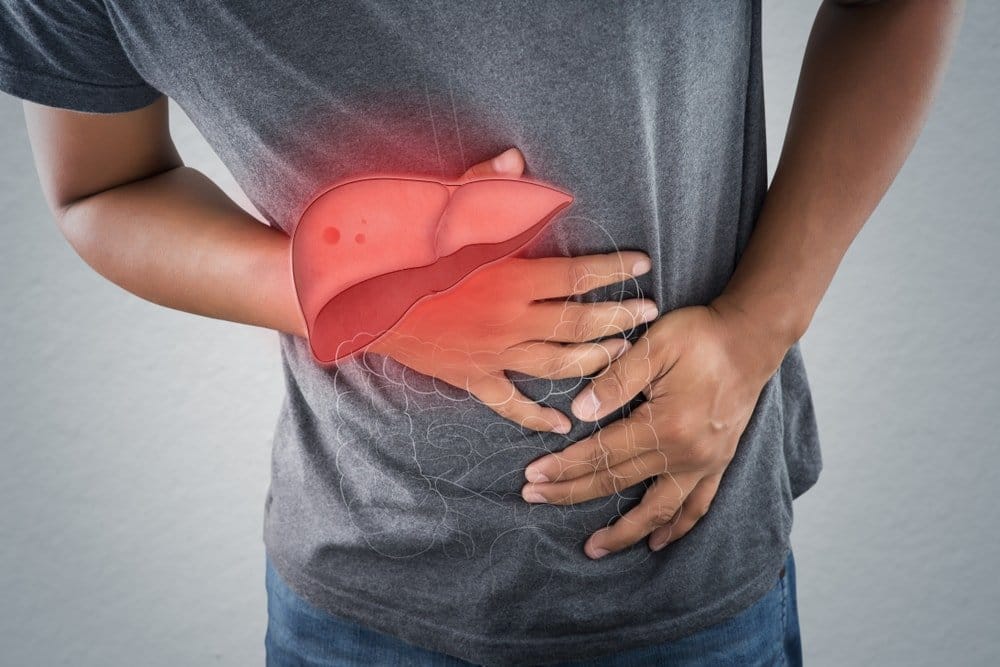The opioid epidemic is taking the spotlight in 2020, but there’s a silent epidemic that’s rocking the nation’s young people.
That epidemic is alcohol-related liver failure, a disease that once affected people in their 50s and 60s more than anyone else. In fact, that perception is part of what’s letting millennials literally drink themselves to death.
Last week, USA Today quoted physician’s assistant Lindsay Yoder as saying “[young people] think it’s an older, white guy who has cirrhosis, he’s been sitting around in a bar after work for decades.”
In other words, people who are under 40 think they’re immune to the consequences of heavy alcohol use. This couldn’t be further from the truth.
Last year, researchers found that the biggest rise in alcohol-related liver failure deaths was in people 25 to 34 years old.
But what’s making millennials drink alcohol (and experience liver damage) at a higher rate than baby boomers?
Why Are Alcohol-Related Diseases Rising in Millennials?
Alcohol-related diseases are increasing in millennials at a higher rate than ever.
A U.S. Census study showed that there was a 10.5% rise every year in alcohol-related liver failure deaths among people 25 to 34 years old. That amounted to a 65% increase over a 7-year period.
Liver disease has a reputation as a disease that shows up in older people after they’ve abused alcohol for decades. It’s becoming apparent that this isn’t true.
These diseases are rising in people in their 20s and 30s for 3 reasons:
- It takes less alcohol than previously thought to cause damage
- Alcohol is legal and easy to access, which increases the perception that it’s harmless
- Some millennials hold onto drinking habits and ideals from college, where there’s a heavy binge-drinking culture
What Causes Alcohol-Related Liver Failure?
Alcohol-related liver failure is caused by long-term moderate drinking. Drinking alcohol causes liver inflammation. Repeated liver inflammation over months or years causes infection, then damage, then organ failure.
You don’t have to get drunk to cause damage. Liver failure results from regular, long-term alcohol use.
For some people, alcohol-related liver failure can result from:
- 2-3 drinks per day for women over a 4-5 year period
- 3-4 drinks per day for men over a 4-5 year period
That amount of drinking seems almost harmless, but it can lead to serious complications like hepatitis, a chronic liver infection that affects up to 20% of heavy drinkers.
Another 10-20% of heavy drinkers develop cirrhosis. In this condition, repeated alcohol abuse damages the liver and causes its cells to scar over. The damage is permanent and can’t be reversed. A scarred liver can’t work as well as a healthy organ.
Without treatment, which must include abstinence from alcohol, cirrhosis causes liver failure.
What Are the Signs of Alcohol-Related Liver Failure?
The signs of liver failure include:
- Abdominal swelling
- Confusion and mood changes
- Desire to sleep
- Upper right abdominal pain
- Nausea and vomiting
- Yellow skin and eyes
Liver failure does not always cause symptoms until it’s an emergency. These signs can come on very quickly and they are life-threatening. Get medical help by calling 911 immediately if you or a loved one has these symptoms.
What’s the Prognosis for Alcohol-Related Liver Failure?
The prognosis for alcohol-related liver failure is serious. It gets worse the longer your condition progresses without treatment. Liver damage from cirrhosis cannot be reversed.
66% of people with liver failure die within 2 years. For cirrhosis that hasn’t progressed to full liver failure, the prognosis is 6 to 12 years.
Alcohol-related liver failure kills most people who develop it. It’s very important to stop drinking alcohol and seek medical help as soon as possible. Abstaining from alcohol is the only way to stop the disease from progressing.
Can You Reverse Alcohol-Related Liver Failure?
Once the liver disease has progressed into liver failure, it can’t be reversed. At this stage, the only treatment option is a liver transplant.
A liver transplant is a serious procedure. Your care team will want to know that you can handle the risks, including cancer and infection risk from the medications you’ll have to take.
That’s why most surgical teams require that you stay abstinent from alcohol for 6 months before the surgery. At the same time, a liver transplant depends on a donor’s liver becoming available. You may be on a waiting list for months or years.
How Can You Avoid Alcohol-Related Liver Failure in Your 20s or 30s?
The only way to avoid alcohol-related liver failure is to skip drinking alcohol on a regular basis.
Excessive alcohol use is defined as more than:
- 1 drink per day for women
- 2 drinks per day for men
That does not mean that it’s safe to have 1 or 2 drinks per day. There’s no proven safe amount of alcohol. Studies suggest that long-term, daily alcohol use causes liver damage regardless of the amount.
However, excessive alcohol use increases your risk of liver damage considerably. The more you drink, the more you increase your risk.
Get Help for Alcohol Use Disorder
If you’re worried about liver failure from binge drinking, it’s time to get help for alcohol use disorder. There’s no better time to commit to recovery than right now.
Northeast Addictions Treatment Center can help you recover from long-term alcohol use with techniques like:
- Cognitive-behavioral therapy to help you manage the connection between your thoughts and your behaviors
- Group therapy to remind you that you’re supported and not alone
- Medication-assisted treatment, including naltrexone or disulfiram
Call Northeast Addictions Treatment Center today to get the ball rolling on recovery. Your life without alcohol can begin today!
Sources:
- Acute liver failure – Symptoms and causes. (2017, August 29)
- Alcohol-related liver failure deaths rising among U.S. young adults. (2018, July 18)
- Felman, A. (n.d.). Alcoholic liver disease: Symptoms, treatment, and causes.
- Plater, R. (n.d.). Millennial Binge Drinking and Liver Disease.
- Shari Rudavsky, USA TODAY. (2020, February 20)


